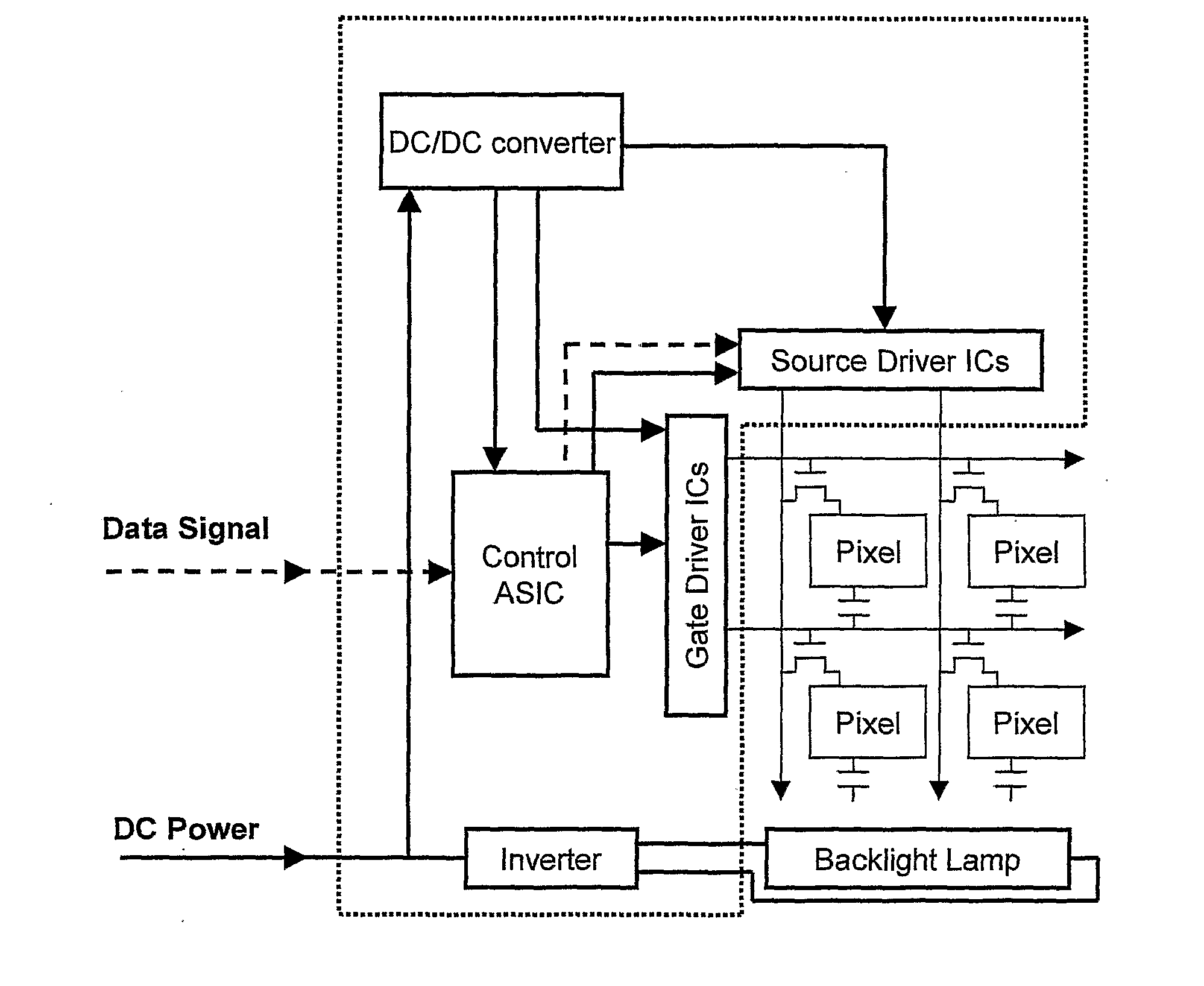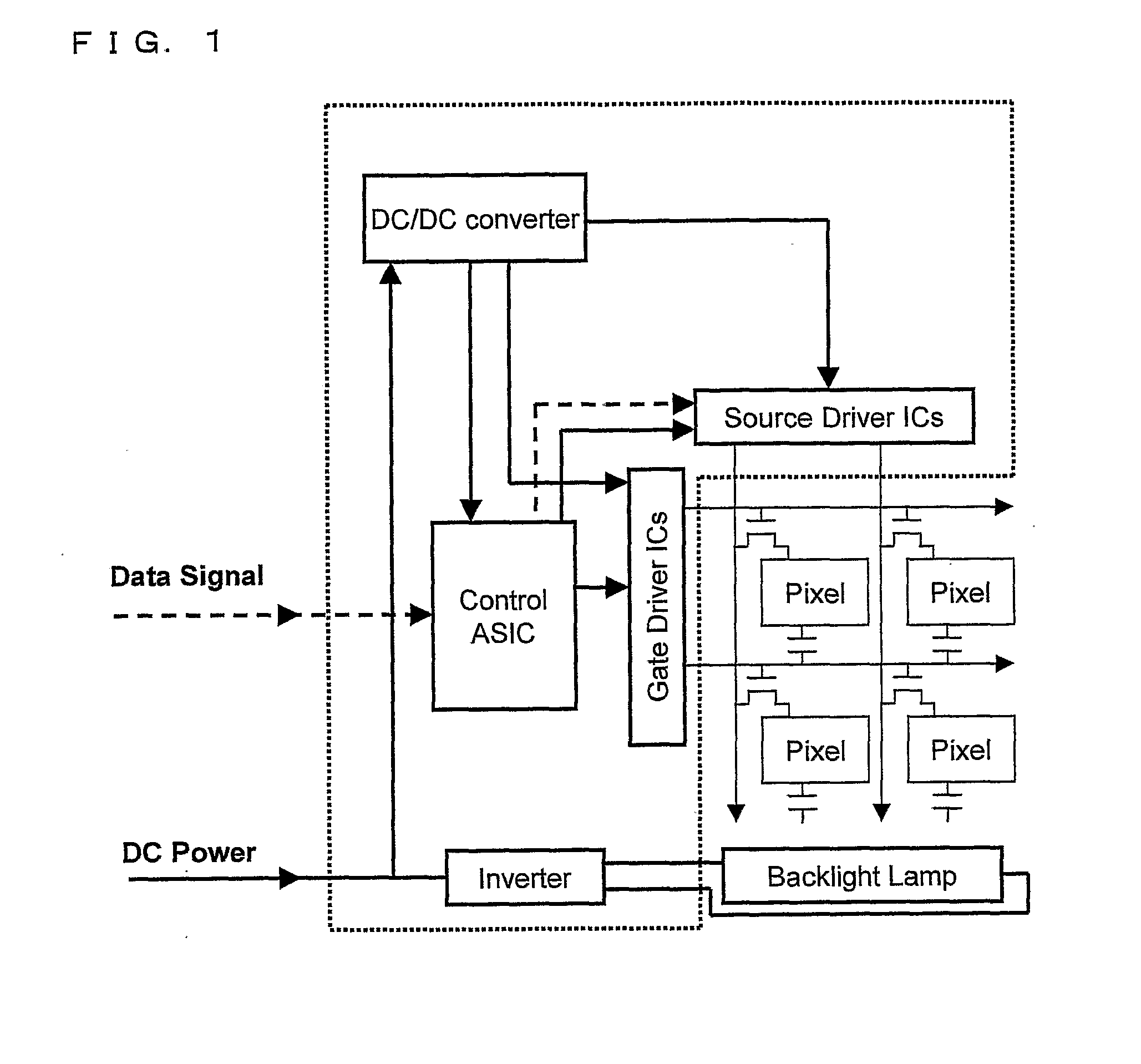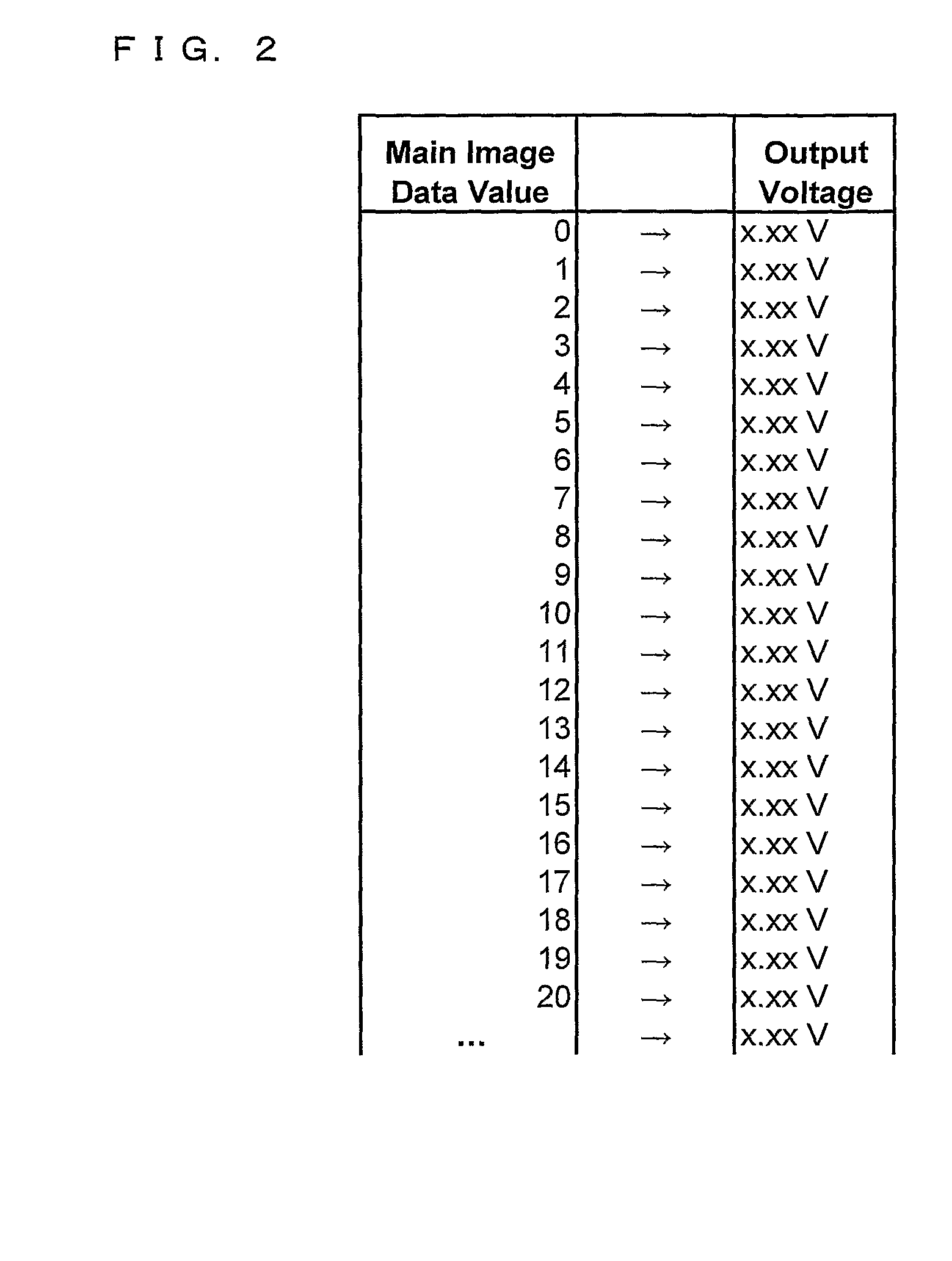Display device
a technology of a display device and a display screen, which is applied in the field of display devices, can solve the problems of requiring mechanical manipulation, i.e. the removal of the film, and the inefficiency of the display in its use of light, and achieves the effect of reducing the resolution of the side image and high degree of visually confusing information
- Summary
- Abstract
- Description
- Claims
- Application Information
AI Technical Summary
Benefits of technology
Problems solved by technology
Method used
Image
Examples
Embodiment Construction
[0091]In a preferred embodiment, the display consists of a standard LCD display, with modified control electronics. An LCD display generally consists of several component parts including:
[0092]1. A backlighting unit to supply even, wide angle illumination to the panel.
[0093]2. Control electronics to receive digital image data and output analogue signal voltages for each pixel, as well as timing pulses and a common voltage for the counter electrode of all pixels. A schematic of the standard layout of an LCD control electronics is shown in FIG. 1 (Ernst Lueder, Liquid Crystal Displays, Wiley and sons Ltd, 2001).
[0094]3. An LC panel, for displaying an image by spatial light modulation, consisting of a two opposing glass substrates, onto one of which is disposed an array of pixel electrodes and active matrix array to direct the electronic signals, received from the control electronics, to the pixel electrodes. Onto the other substrate is usually disposed a uniform common electrode and c...
PUM
 Login to View More
Login to View More Abstract
Description
Claims
Application Information
 Login to View More
Login to View More - R&D
- Intellectual Property
- Life Sciences
- Materials
- Tech Scout
- Unparalleled Data Quality
- Higher Quality Content
- 60% Fewer Hallucinations
Browse by: Latest US Patents, China's latest patents, Technical Efficacy Thesaurus, Application Domain, Technology Topic, Popular Technical Reports.
© 2025 PatSnap. All rights reserved.Legal|Privacy policy|Modern Slavery Act Transparency Statement|Sitemap|About US| Contact US: help@patsnap.com



